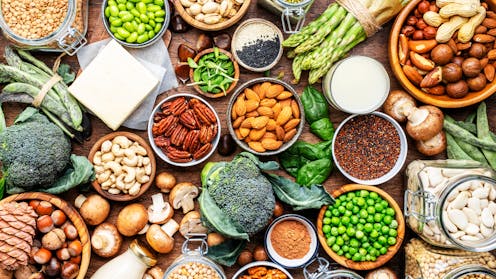By changing our diets now, we can avoid the food chaos that climate change is bringing
Climate change is pushing up the prices of the food that we buy and therefore changing what we eat. One-third of UK food price increases in 2023 resulted from climate change, according to research by agricultural economists. This extra cost contributed to food price inflation and the UK’s cost-of-living crisis.
By ratcheting up food prices and driving food insecurity, the climate crisis already affects the stability of societies around the world. Several studies have found that shocks to the food supply have been increasing and that climate-related losses of food in major breadbasket regions (the areas of the world that produce most food) are likely to increase.
These projections often omit difficult-to-model consequences like the spread of crop pests and damage to infrastructure. Real-world impacts could be worse than those that can be modelled.
Studies predict significant food price increases every year in the coming decade. Food industry professionals are raising the alarm to food vulnerabilities unprecedented in scale and variety. In the long term, climate change could make it impossible to grow food in one-third of current food production areas.
Sustainable food system researchers are now considering scenarios of significant food system stress and even collapse. One study found that 40% of UK food experts think that civil unrest from food supply issues is possible within the next decade. This increases to 80% of experts when asked if it was possible over a 50-year timeline.
Without a rapid response, climate-driven increases in food prices could cause havoc in the global food system. High-income nations are not safe, as grinding inflation can destabilise society, taking down governments and institutions. Given the febrile political atmosphere throughout the 2022-23 cost-of-living crisis, I would argue that some of these dynamics are already playing out.
A fork in the road
This trajectory of climate-driven food price hikes – leading to social unrest and political decay – is not inevitable. The scientific consensus shows that the biggest opportunity we have for reducing food’s environmental impacts across many countries is increasing the amount of plants we eat and reducing meat and dairy intake.
This could help us better deal with shocks. It’s likely such shifts would be better for related climate shocks such as flooding and storm surges.
Plant-rich diets are beneficial because eating plants is a far more efficient way of delivering the calories and nutrients we need for a healthy lifestyle than eating animals that are fed on plants.
My team and I found that a shift to plant-rich diets in the UK would free an area almost the size of Scotland. As climate change hits food production, some land currently producing animal feed could be used for human crops instead. There would still be plenty of land left which could – if sufficient policies are put in place – be used to meet biodiversity targets while improving access to nature for millions and improving mental health.
The plant-rich diet we investigated isn’t vegan. It’s not even vegetarian, although it does include a reasonable (and healthier) amount of meat and dairy. For example, it still includes a hamburger every fortnight.
A healthy plant-rich diet still includes eating a burger once a fortnight.
oneinchpunch/Shutterstock
This shift to plant-rich diets means the scale of the whole agricultural system becomes much smaller, giving more space to grow crops on saved land and deal with flood waters while saving money (plant-rich diets are generally cheaper to produce and buy than meat-heavy diets in high-income nations).
This shift could trigger a rural renaissance that supports farmers changing to different farming methods, enhances nature restoration and builds flood water protection. But this all needs joined-up action, including support from the government and demand from the public.
Working with nature would become a job many would leap at, including farmers. UK farmers consistently report concerns about mental health due to industry pressures. There is some evidence that livestock farmers face the largest mental health challenges, driven largely by how little time they can take off.
Giving options like more subsidy support for plant agriculture or nature restoration might be just the exit strategy many farmers need.
Green shoots
By transforming how we grow food and what we eat – rather than letting climate change dictate the pace of change – we have so much to gain. If you are a proponent for less but better meat, for increased crop diversity or organic food, then the answer is more plants in our diets. This extends beyond agriculture to anything that requires more land. If you promote timber buildings, biofuels, nature restoration, more housing, bioplastics or anything else that needs land, the answer is, again, more plants.
Read more:
How Denmark’s oysters are transforming foodies into citizen scientists
Some countries have already developed plant-rich action plans. Denmark, a major pig producer, has developed policies to encourage plant-rich diets along the supply chain – from supporting chefs in creating new, environmentally-friendly dishes to driving the government’s procurement of organic food (which will encourage more fruit and veg as organic meat is more expensive).
This is a story of exploration, adaptation and improved health, not one of abstinence. Landscapes, human health and diversity in diets can all be transformed for the better. Once we’ve made the transition we’ll look back and wonder why on Earth we didn’t do it sooner.
Don’t have time to read about climate change as much as you’d like?
Get a weekly roundup in your inbox instead. Every Wednesday, The Conversation’s environment editor writes Imagine, a short email that goes a little deeper into just one climate issue. Join the 45,000+ readers who’ve subscribed so far.
Paul Behrens receives funding from the British Academy and the Horizon Europe programme.




